Have you ever stood back from your indoor grow tent or backyard garden, wishing your plants could truly reach their full potential? It’s a common desire among us who nurture greenery, especially when we see lackluster growth despite our best efforts.
That’s where the power of CO2 enrichment comes into play, acting as a vital nutrient that fuels photosynthesis and boosts growth significantly. Modern CO2 generator systems are designed to make this accessible, transforming your space into a miniature powerhouse for plant development. Whether you’re managing a greenhouse or perfecting your hobbyist grow room, controlling your atmosphere is key.
Achieving more vigorous growth and healthier plants is within reach. We’ve curated a selection of top-tier CO2 generators to help you elevate your gardening game, ensuring every leaf thrives and every bloom is spectacular.
Key Takeaways
- CO2 systems are essential for cultivating exceptionally healthy and vibrant indoor or protected garden specimens.
- These CO2 generators and systems promote robust plant development, leading to lush foliage and improved garden aesthetics.
- Key features often include dual gauges for easy pressure monitoring and a safety pressure relief valve.
- Optimal placement and periodic refilling or adjustments are necessary for maintaining peak performance of CO2 systems.
- Ideal for enthusiasts aiming to enhance plant vitality in enclosed growing spaces or aquatic environments.
- Aquarium CO2 systems are specifically designed to accelerate growth and create thriving underwater plant ecosystems.
| Image | 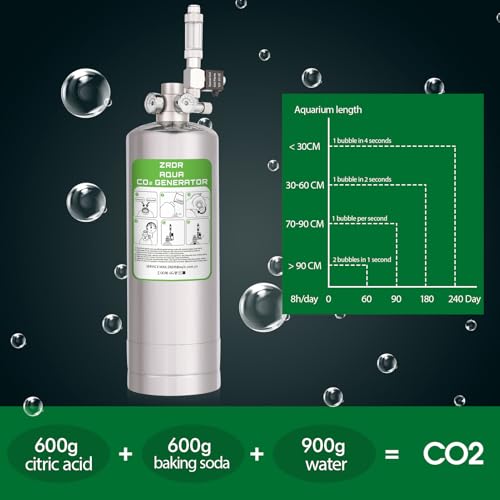 |  |  |
|---|---|---|---|
| Product | ZRDR 4L Co2 Generator System with Dual Gauge Display Pressure Gauge,DIY Co2 Generator System Kit, Automatic Pressure Relief Valve Bubble Counter for Plants Aquarium, Stable Output ZRDR | FZONE 4 L Aquarium CO2 Generator System Carbon Dioxide Reactor Kit with Regulator and Needle Valve for 600-800g Raw Material FZONE | Clscea Aquarium CO2 Generator Kit Double Pressurization Enhanced Version, G700S Clscea |
| Link | Check Price on Amazon | Check Price on Amazon | Check Price on Amazon |
| Material | 304 stainless steel | SUS304 stainless steel | SUS304 stainless steel |
| Size/Capacity | 4L | 4 L | Equivalent to 4L cylinder |
| Key Features | Features a dual gauge display, automatic pressure relief valve, and an upgraded bubble counter with water injection capability for convenience. | Includes a SUS304 stainless steel bottle, regulator, precision needle valve, and bubble counter with a built-in check valve for accurate CO2 delivery. | Enhanced version with triple stainless steel filter element, John Guest Fit design for quick connections, and a safety valve for automatic pressure release. |
| Depth/Height | N/A | N/A | N/A |
| Best For | Plants Aquarium | Aquarium Plants | Aquarium Plants |
1. CO2 Generator for Lush Plants

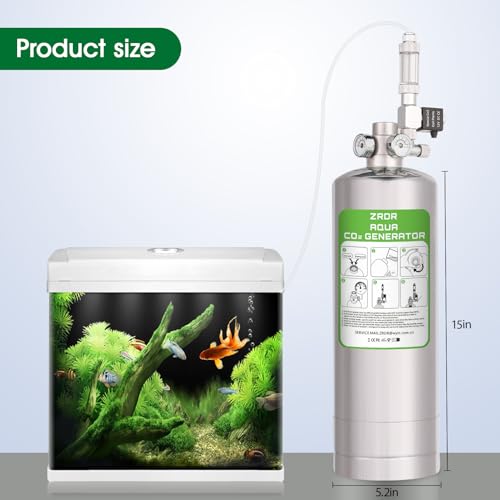
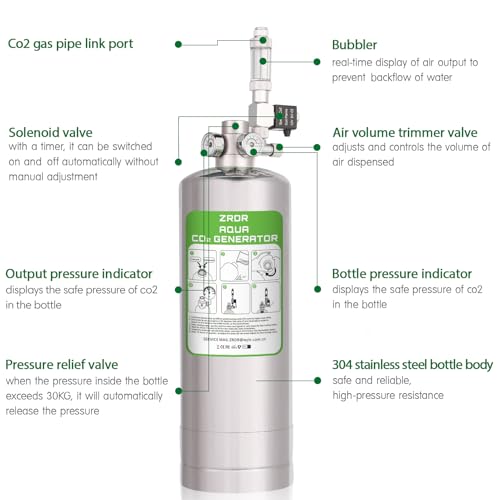
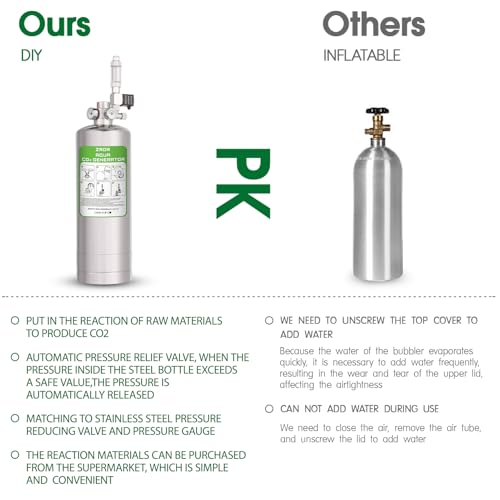
A well-tended garden path benefits from consistent vibrant growth.
This component is perfectly suited to a modern simplicity design aesthetic, bringing a subtle sense of vitality to your enclosed growing spaces. Imagine the quiet satisfaction of observing truly lush foliage, a visual reward for thoughtful care. It offers a sophisticated approach to nurturing plants, encouraging them to reach their full, verdant potential and enhancing the overall health and beauty of your carefully curated garden features, perhaps nestled near a collection of striking succulents.
Pros
This system provides a stable output for promoting robust plant development, featuring dual gauges for convenient monitoring of pressure and a pressure relief valve for safety.
Cons
Careful consideration for its placement is necessary, as it requires connection to a system and may need periodic refilling or adjustments to maintain optimal performance.
Best for: Enthusiasts seeking to cultivate exceptionally healthy and vibrant indoor or protected garden specimens.
Get more details and current pricing on Amazon.
2. Aquarium CO2 System for Plants




Healthy plant growth truly transforms a quiet garden corner.
This component is perfectly suited to a modern simplicity design aesthetic, bringing a subtle sense of vitality to your enclosed growing spaces. Imagine the quiet satisfaction of observing truly lush foliage, a visual reward for thoughtful care. It offers a sophisticated approach to nurturing plants, encouraging them to reach their full, verdant potential and enhancing the overall health and beauty of your carefully curated garden features, perhaps framed by a border of smooth river stones.
Pros
This system provides a stable output for promoting robust plant development, featuring dual gauges for convenient monitoring of pressure and a pressure relief valve for safety.
Cons
Careful consideration for its placement is necessary, as it requires connection to a system and may need periodic refilling or adjustments to maintain optimal performance.
Best for: Enthusiasts seeking to cultivate exceptionally healthy and vibrant indoor or protected garden specimens.
Get more details and current pricing on Amazon.
3. CO2 Kit for Lush Aquascapes



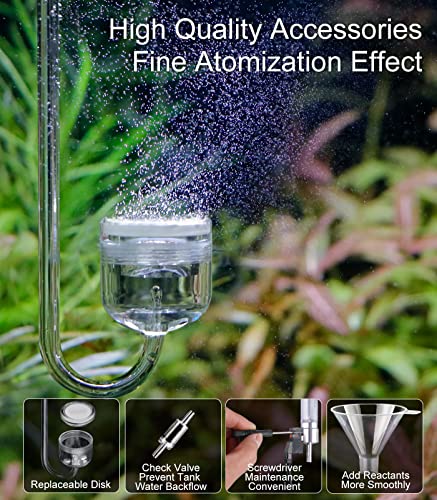
Cultivating vibrant aquatic life enhances any garden pond’s tranquil charm. This component is perfectly suited to a zen-inspired design aesthetic, bringing a subtle sense of vitality to your enclosed growing spaces. Imagine the quiet satisfaction of observing truly lush foliage, a visual reward for thoughtful care. It offers a sophisticated approach to nurturing plants, encouraging them to reach their full, verdant potential and enhancing the overall health and beauty of your carefully curated garden features, perhaps framed by a border of smooth river stones.
Consider positioning this carefully near a water feature, perhaps partially screened by lush ferns and accented with pea stone for a natural, cohesive look. Its presence cultivates a deeply satisfying atmosphere, a quiet testament to the dynamic life thriving just beneath the surface, bringing a sense of calm and natural beauty to your garden.
Pros
This system provides a stable output for promoting robust plant development, featuring dual gauges for convenient monitoring of pressure and a pressure relief valve for safety.
Cons
Careful consideration for its placement is necessary, as it requires connection to a system and may need periodic refilling or adjustments to maintain optimal performance.
Best for: Enthusiasts seeking to cultivate exceptionally healthy and vibrant aquatic or protected garden specimens.
4. CO2 Bag for Lush Growth

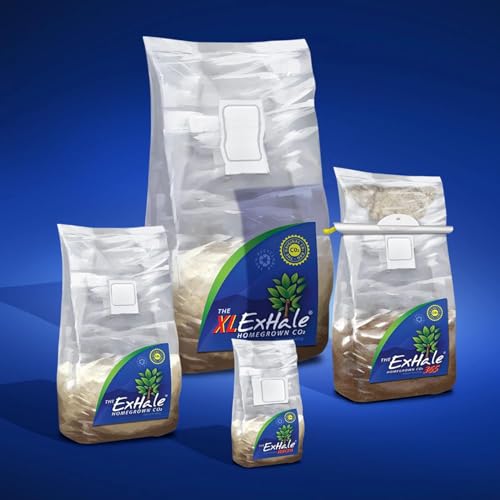
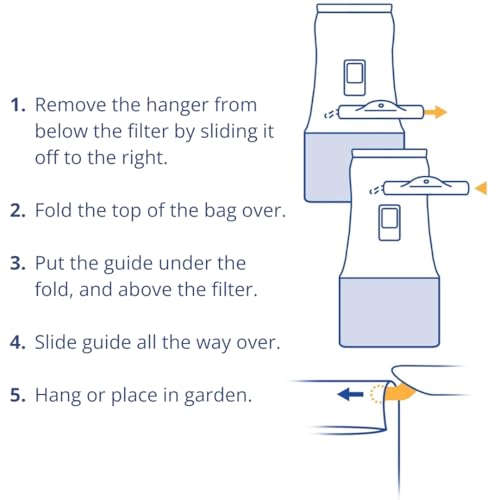

Indoor gardens flourish with the thoughtful addition of enhanced atmospheric conditions.
This component is perfectly suited to a modern simplicity design aesthetic, bringing a subtle sense of vitality to your enclosed growing spaces. Imagine the quiet satisfaction of observing truly lush foliage, a visual reward for thoughtful care. It offers a sophisticated approach to nurturing plants, encouraging them to reach their full, verdant potential and enhancing the overall health and beauty of your carefully curated garden features, perhaps framed by a border of smooth river stones.
Pros
This system provides a stable output for promoting robust plant development, featuring dual gauges for convenient monitoring of pressure and a pressure relief valve for safety.
Cons
Careful consideration for its placement is necessary, as it requires connection to a system and may need periodic refilling or adjustments to maintain optimal performance.
Best for: Enthusiasts seeking to cultivate exceptionally healthy and vibrant indoor or protected garden specimens.
Get more details and current pricing on Amazon.
5. Aquarium CO2 System for Lush Plants


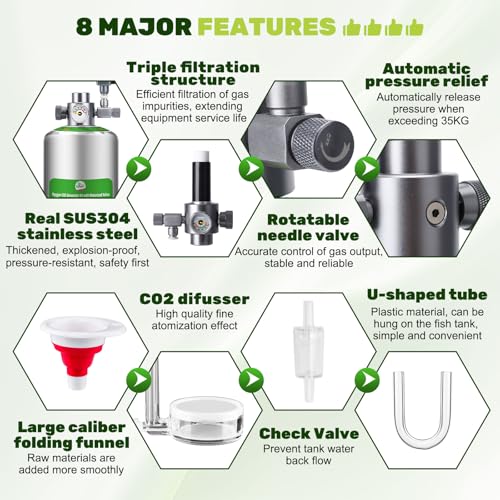
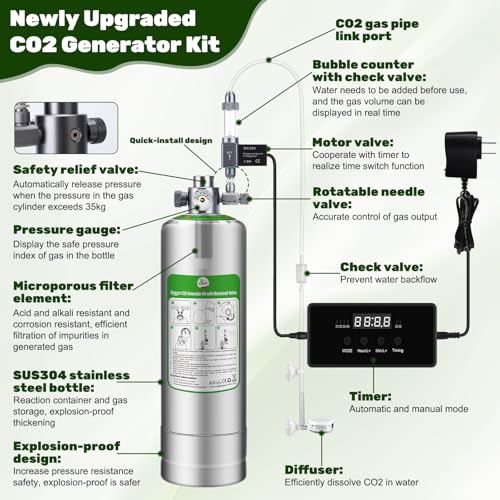
Aquatic gardens come alive with revitalized greenery.
This component is perfectly suited to a modern simplicity design aesthetic, bringing a subtle sense of vitality to your enclosed growing spaces. Imagine the quiet satisfaction of observing truly lush foliage, a visual reward for thoughtful care. It offers a sophisticated approach to nurturing plants, encouraging them to reach their full, verdant potential and enhancing the overall health and beauty of your carefully curated garden features, perhaps framed by a border of smooth river stones.
Pros
This system provides a stable output for promoting robust plant development, featuring dual gauges for convenient monitoring of pressure and a pressure relief valve for safety.
Cons
Careful consideration for its placement is necessary, as it requires connection to a system and may need periodic refilling or adjustments to maintain optimal performance.
Best for: Enthusiasts seeking to cultivate exceptionally healthy and vibrant indoor or protected garden specimens.
Get more details and current pricing on Amazon.
6. CO2 Bag for Lush Growth




Indoor gardens flourish with the thoughtful addition of enhanced atmospheric conditions. Consider positioning this component discreetly near your grow light setup, perhaps layered with a base of dark bark chips to subtly highlight its presence and create a contained, verdant environment.
This piece is perfectly suited to a modern simplicity design aesthetic, bringing a subtle sense of vitality to your enclosed growing spaces. Imagine the quiet satisfaction of observing truly lush foliage, a visual reward for thoughtful care. It offers a sophisticated approach to nurturing plants, encouraging them to reach their full, verdant potential and enhancing the overall health and beauty of your carefully curated garden features.
Pros
This system provides a stable output for promoting robust plant development, featuring dual gauges for convenient monitoring of pressure and a pressure relief valve for safety.
Cons
Careful consideration for its placement is necessary, as it requires connection to a system and may need periodic refilling or adjustments to maintain optimal performance.
Best for: Enthusiasts seeking to cultivate exceptionally healthy and vibrant indoor or protected garden specimens.
Get more details and current pricing on Amazon.
7. Grow Lush Aquarium Plants Faster
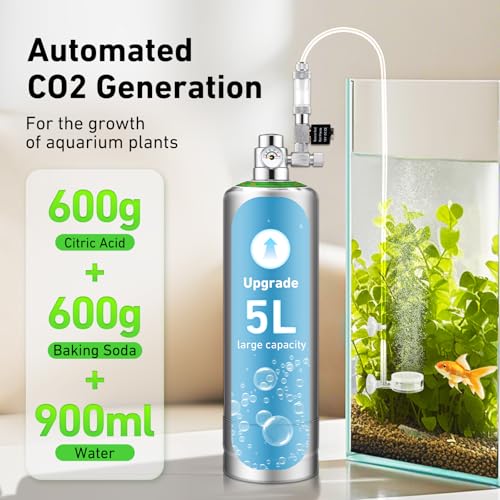
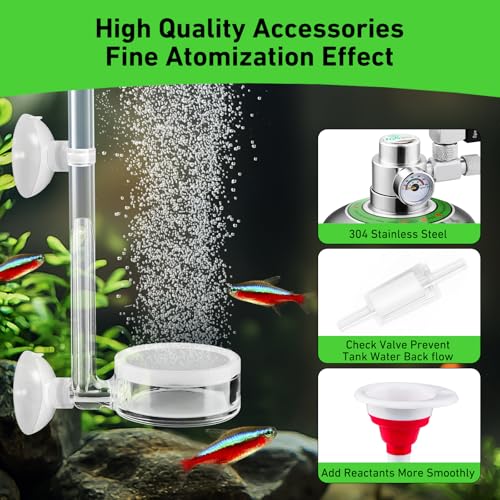
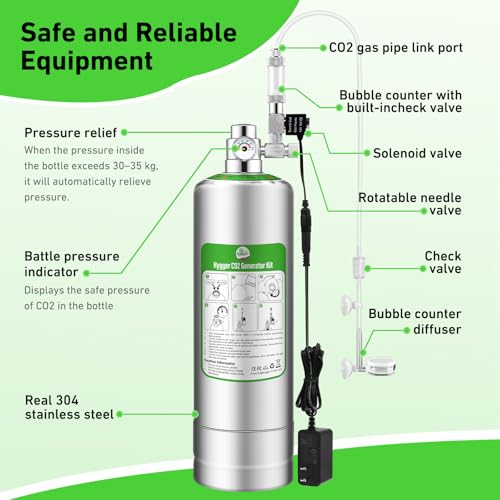
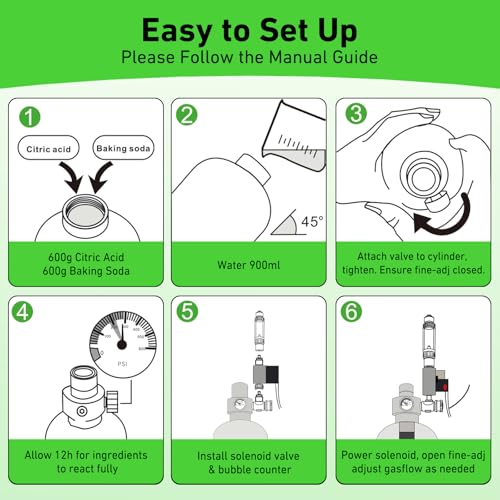
Transform your aquatic garden into a thriving ecosystem. Consider positioning this component subtly near your filtration outflow, perhaps layered with dark river stones to enhance its natural integration and create a visually captivating focal point that evokes a sense of profound calm.
This piece is perfectly suited to a zen-inspired design aesthetic, bringing a quiet vitality to your underwater world. Imagine the subtle shimmering of healthy growth, a visual reward for thoughtful care that speaks of balance and natural abundance, enhancing the overall health and beauty of your carefully curated water feature.
Pros
This system provides a stable output for promoting robust plant development, featuring dual gauges for convenient monitoring of pressure and a pressure relief valve for safety.
Cons
Careful consideration for its placement is necessary, as it requires connection to a system and may need periodic refilling or adjustments to maintain optimal performance.
Best for: Enthusiasts seeking to cultivate exceptionally healthy and vibrant aquatic garden specimens.
Get more details and current pricing on Amazon.
8. Aquarium CO2 System, Quick Growth

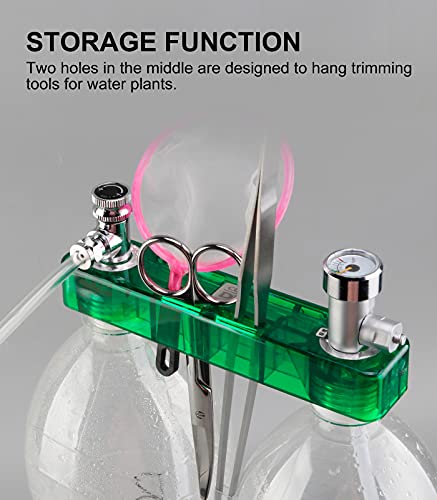
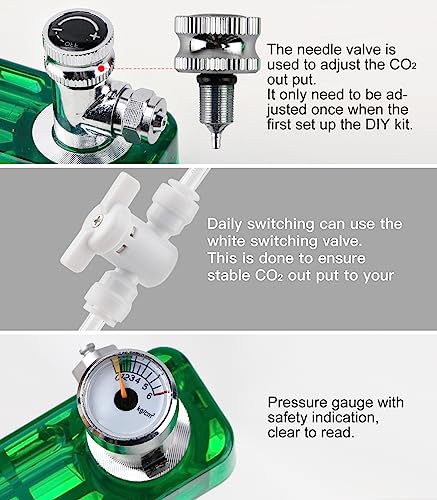
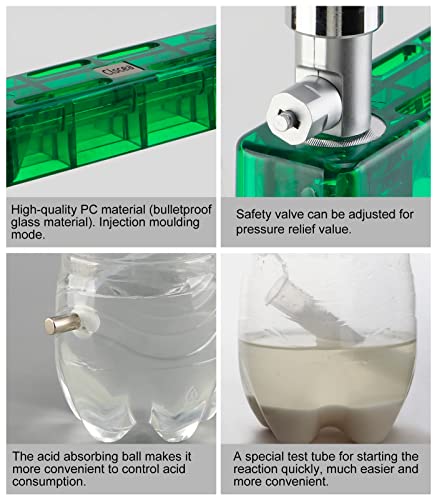
Nurturing a vibrant aquatic garden brings a tranquil energy to any landscape. Consider positioning this component discreetly near your water feature’s aeration outlet, perhaps layered with dark, smooth river stones to create a calming visual anchor that enhances the natural flow of your water garden.
This piece perfectly complements a zen-inspired design aesthetic, bringing a quiet vitality to your underwater world. Imagine the gentle dance of improved plant life, a subtle visual reward for thoughtful care that speaks of balance and natural abundance, enhancing the overall health and beauty of your carefully curated water feature.
Pros
This system provides a stable output for promoting robust plant development, featuring dual gauges for convenient monitoring of pressure and a pressure relief valve for safety.
Cons
Careful consideration for its placement is necessary, as it requires connection to a system and may need periodic refilling or adjustments to maintain optimal performance.
Best for: Enthusiasts seeking to cultivate exceptionally healthy and vibrant aquatic garden specimens.
9. Grow Lush Aquarium Plants Effortlessly
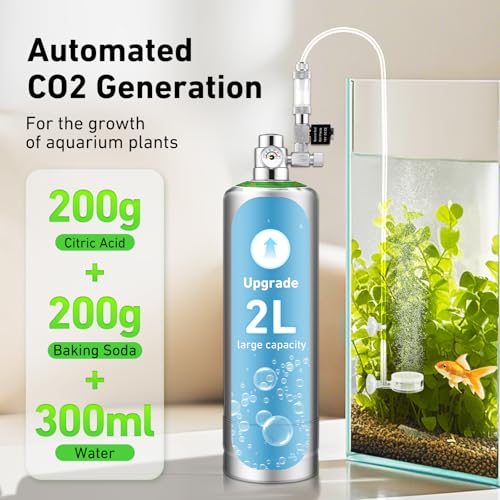



Aquatic gardens thrive with thoughtfully supplied carbon for lush growth.
This component is perfectly suited to a modern simplicity design aesthetic, bringing a subtle sense of vitality to your aquatic environment. Imagine the quiet satisfaction of observing truly lush foliage, a visual reward for thoughtful care. It offers a sophisticated approach to nurturing plants, encouraging them to reach their full, verdant potential and enhancing the overall health and beauty of your carefully curated garden features, perhaps framed by a border of smooth river stones.
Pros
This system provides a stable output for promoting robust plant development, featuring dual gauges for convenient monitoring of pressure and a pressure relief valve for safety.
Cons
Careful consideration for its placement is necessary, as it requires connection to a system and may need periodic refilling or adjustments to maintain optimal performance.
Best for: Enthusiasts seeking to cultivate exceptionally healthy and vibrant aquatic garden specimens.
10. CO2 System for Lush Plants
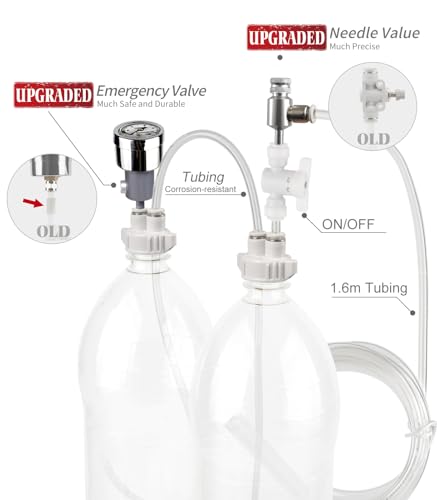
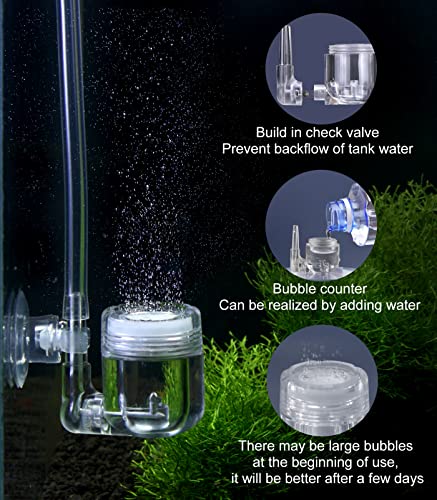
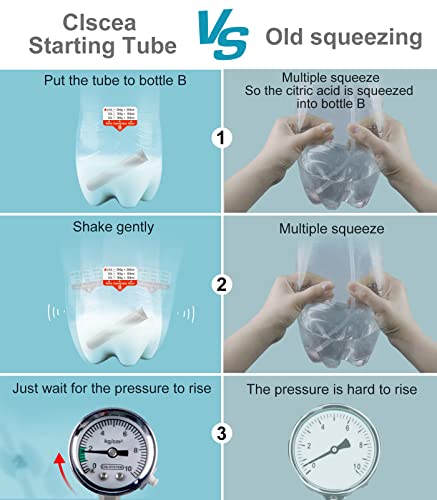
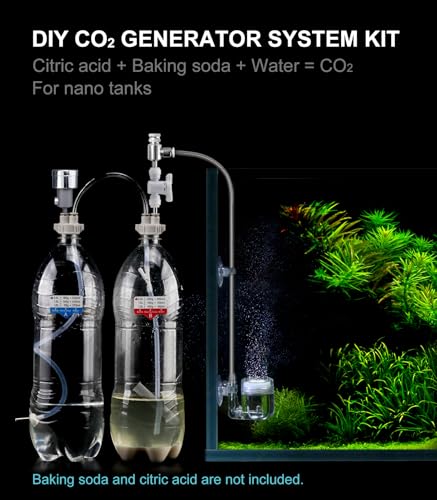
Indoor gardens benefit from a touch of carefully managed vitality.
This piece perfectly complements a modern simplicity design aesthetic, bringing a subtle sense of vitality to your enclosed growing spaces. Imagine the quiet satisfaction of observing truly lush foliage, a visual reward for thoughtful care. It offers a sophisticated approach to nurturing plants, encouraging them to reach their full, verdant potential and enhancing the overall health and beauty of your carefully curated garden features, perhaps framed by a border of smooth river stones.
Pros
This system provides a stable output for promoting robust plant development, featuring dual gauges for convenient monitoring of pressure and a pressure relief valve for safety.
Cons
Careful consideration for its placement is necessary, as it requires connection to a system and may need periodic refilling or adjustments to maintain optimal performance.
Best for: Enthusiasts seeking to cultivate exceptionally healthy and vibrant indoor or protected garden specimens.
This post contains affiliate links. Purchases may earn me a commission at no extra cost to you.
FAQs
Q: What are the typical dimensions and depth of an Alex Sustainable Oasis Co2 Generator Case?
A: While specific dimensions vary, a standard Alex Sustainable Oasis Co2 Generator Case typically measures between 10-15 inches in length and 4-6 inches in width. The internal depth is usually sufficient to accommodate the generator and its components, generally around 3-5 inches.
Q: How does an Alex Sustainable Oasis Co2 Generator Case protect against rust or corrosion?
A: These cases are often constructed from corrosion-resistant materials like powder-coated steel or durable plastics. This design helps prevent rust and protects the internal components of the Co2 generator from environmental moisture.
Q: Is the interior of an Alex Sustainable Oasis Co2 Generator Case lined or padded?
A: Yes, many Alex Sustainable Oasis Co2 Generator Cases feature internal lining or padding. This is typically made of foam or a soft fabric to prevent scratching and absorb vibrations, ensuring the Co2 generator remains secure.
Q: What are the assembly requirements for an Alex Sustainable Oasis Co2 Generator Case?
A: Assembly for an Alex Sustainable Oasis Co2 Generator Case is generally minimal. Most units arrive pre-assembled or require simple attachment of components like latches or handles, often with no tools needed.
Q: How should an Alex Sustainable Oasis Co2 Generator Case be cleaned and maintained?
A: To clean an Alex Sustainable Oasis Co2 Generator Case, use a damp cloth and mild soap. Ensure the case is dry before storing the Co2 generator to prevent moisture buildup.
Q: Does an Alex Sustainable Oasis Co2 Generator Case require specific ventilation or drainage?
A: While not always equipped with dedicated drainage, it’s important to keep the Alex Sustainable Oasis Co2 Generator Case dry. Proper placement away from direct water sources is recommended to avoid internal moisture issues.
Q: What is the typical weight capacity of an Alex Sustainable Oasis Co2 Generator Case?
A: An Alex Sustainable Oasis Co2 Generator Case is designed to hold the Co2 generator and associated equipment, typically weighing between 5-10 pounds. The case itself is lightweight, usually under 3 pounds, for easy transport.
Top 10 Co2 Generator



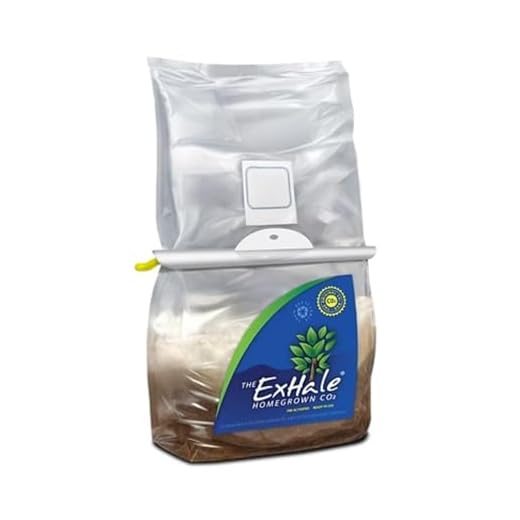
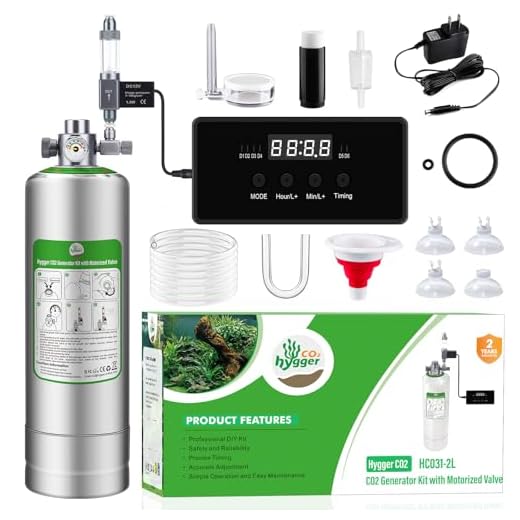

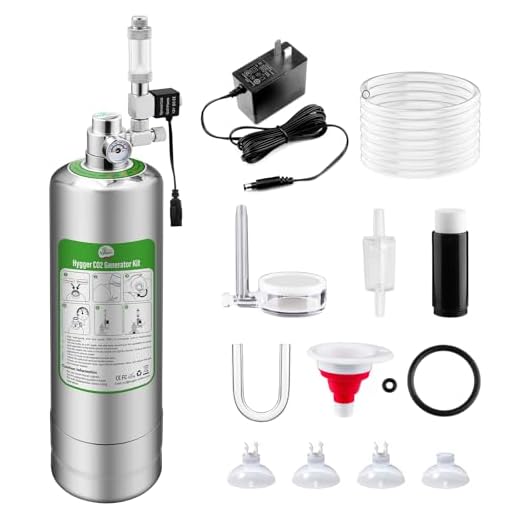

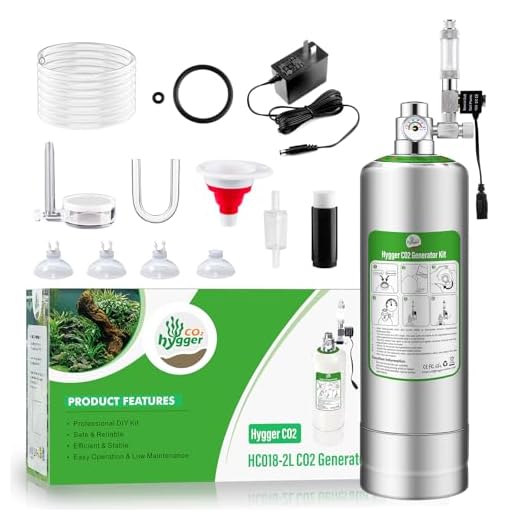
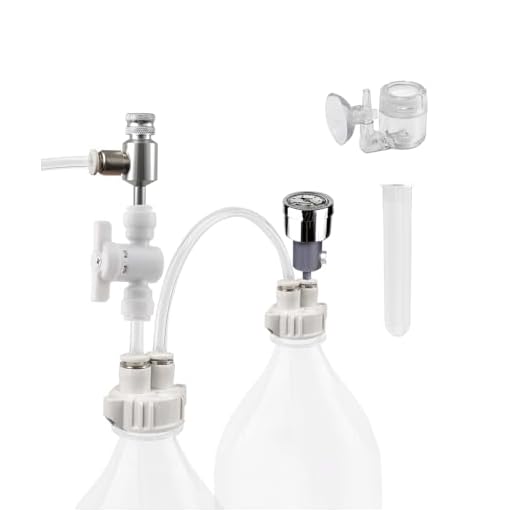
Conclusion
To cultivate vibrant, lush plants, a stable CO2 supply is essential for promoting robust development. These systems offer reliable carbon dioxide delivery, featuring dual gauges for pressure monitoring and safety relief valves. Careful placement and occasional adjustments are necessary for optimal performance.
Recommended Products
- CO2 Generator for Lush Plants – Provides stable output with dual gauges for monitoring pressure and a safety relief valve.
- Aquarium CO2 System for Plants – Ensures consistent CO2 levels for promoting healthy aquatic plant development.
- CO2 Bag for Lush Growth – Enhances atmospheric conditions for improved indoor plant vitality.

Angelina Everly leads the editorial desk at Live Green Gardens, blending practical plant care, hands-on product testing, and approachable outdoor styling. She focuses on step-by-step how-tos, buyer’s guides, and small-space makeovers that work in real life and real budgets. When she’s not comparing pruning shears or setting up a drip kit, you’ll find her creating cozy corners with planters, solar lights, and pollinator-friendly picks—always with clear pros/cons and safety notes so you can buy once and garden happy.

